+ Open data
Open data
- Basic information
Basic information
| Entry | Database: PDB / ID: 1tf4 | ||||||
|---|---|---|---|---|---|---|---|
| Title | ENDO/EXOCELLULASE FROM THERMOMONOSPORA | ||||||
 Components Components | T. FUSCA ENDO/EXO-CELLULASE E4 CATALYTIC DOMAIN AND CELLULOSE-BINDING DOMAIN | ||||||
 Keywords Keywords | GLYCOSYL HYDROLASE / CELLULOSE DEGRADATION | ||||||
| Function / homology |  Function and homology information Function and homology informationcellulose binding / cellulase / cellulase activity / cellulose catabolic process Similarity search - Function | ||||||
| Biological species |   Thermobifida fusca (bacteria) Thermobifida fusca (bacteria) | ||||||
| Method |  X-RAY DIFFRACTION / X-RAY DIFFRACTION /  MIR / Resolution: 1.9 Å MIR / Resolution: 1.9 Å | ||||||
 Authors Authors | Sakon, J. / Wilson, D.B. / Karplus, P.A. | ||||||
 Citation Citation |  Journal: Nat.Struct.Biol. / Year: 1997 Journal: Nat.Struct.Biol. / Year: 1997Title: Structure and mechanism of endo/exocellulase E4 from Thermomonospora fusca. Authors: Sakon, J. / Irwin, D. / Wilson, D.B. / Karplus, P.A. | ||||||
| History |
|
- Structure visualization
Structure visualization
| Structure viewer | Molecule:  Molmil Molmil Jmol/JSmol Jmol/JSmol |
|---|
- Downloads & links
Downloads & links
- Download
Download
| PDBx/mmCIF format |  1tf4.cif.gz 1tf4.cif.gz | 282.5 KB | Display |  PDBx/mmCIF format PDBx/mmCIF format |
|---|---|---|---|---|
| PDB format |  pdb1tf4.ent.gz pdb1tf4.ent.gz | 225.1 KB | Display |  PDB format PDB format |
| PDBx/mmJSON format |  1tf4.json.gz 1tf4.json.gz | Tree view |  PDBx/mmJSON format PDBx/mmJSON format | |
| Others |  Other downloads Other downloads |
-Validation report
| Summary document |  1tf4_validation.pdf.gz 1tf4_validation.pdf.gz | 433.3 KB | Display |  wwPDB validaton report wwPDB validaton report |
|---|---|---|---|---|
| Full document |  1tf4_full_validation.pdf.gz 1tf4_full_validation.pdf.gz | 441.5 KB | Display | |
| Data in XML |  1tf4_validation.xml.gz 1tf4_validation.xml.gz | 67.8 KB | Display | |
| Data in CIF |  1tf4_validation.cif.gz 1tf4_validation.cif.gz | 99.3 KB | Display | |
| Arichive directory |  https://data.pdbj.org/pub/pdb/validation_reports/tf/1tf4 https://data.pdbj.org/pub/pdb/validation_reports/tf/1tf4 ftp://data.pdbj.org/pub/pdb/validation_reports/tf/1tf4 ftp://data.pdbj.org/pub/pdb/validation_reports/tf/1tf4 | HTTPS FTP |
-Related structure data
- Links
Links
- Assembly
Assembly
| Deposited unit | 
| |||||||||
|---|---|---|---|---|---|---|---|---|---|---|
| 1 | 
| |||||||||
| 2 | 
| |||||||||
| Unit cell |
| |||||||||
| Components on special symmetry positions |
| |||||||||
| Noncrystallographic symmetry (NCS) | NCS oper: (Code: given Matrix: (0.272878, 0.698058, 0.662007), Vector: |
- Components
Components
| #1: Protein | Mass: 67216.750 Da / Num. of mol.: 2 / Fragment: CATALYTIC DOMAIN AND CELLULOSE-BINDING DOMAIN Source method: isolated from a genetically manipulated source Source: (gene. exp.)   Thermobifida fusca (bacteria) / Gene: BAMH1-PST1 FRAGMENT OF T. FUSC / Plasmid: PIJ702 / Species (production host): Streptomyces lividans Thermobifida fusca (bacteria) / Gene: BAMH1-PST1 FRAGMENT OF T. FUSC / Plasmid: PIJ702 / Species (production host): Streptomyces lividansGene (production host): BAMH1-PST1 FRAGMENT OF T. FUSCA GENOMIC DNA CARRYING NATIVE E4 GENE Production host:  Streptomyces lividans TK24 (bacteria) / Strain (production host): TK24 / References: UniProt: P26221, cellulase Streptomyces lividans TK24 (bacteria) / Strain (production host): TK24 / References: UniProt: P26221, cellulase#2: Chemical | ChemComp-CA / #3: Water | ChemComp-HOH / | Has protein modification | Y | |
|---|
-Experimental details
-Experiment
| Experiment | Method:  X-RAY DIFFRACTION / Number of used crystals: 1 X-RAY DIFFRACTION / Number of used crystals: 1 |
|---|
- Sample preparation
Sample preparation
| Crystal | Density Matthews: 3.1 Å3/Da / Density % sol: 52 % | ||||||||||||||||||||||||||||||
|---|---|---|---|---|---|---|---|---|---|---|---|---|---|---|---|---|---|---|---|---|---|---|---|---|---|---|---|---|---|---|---|
| Crystal grow | Temperature: 277 K / pH: 5.8 Details: 90MG/ML E4-68 26% PEG8000 0.7M LICL 0.1M NA CITRATE, PH5.8 4 DEGREE, temperature 277K | ||||||||||||||||||||||||||||||
| Crystal grow | *PLUS Temperature: 4 ℃ / Method: vapor diffusion, hanging drop | ||||||||||||||||||||||||||||||
| Components of the solutions | *PLUS
|
-Data collection
| Diffraction | Mean temperature: 287 K |
|---|---|
| Diffraction source | Source:  ROTATING ANODE / Type: RIGAKU RUH2R / Wavelength: 1.5418 ROTATING ANODE / Type: RIGAKU RUH2R / Wavelength: 1.5418 |
| Detector | Type: XUONG-HAMLIN MULTIWIRE / Detector: AREA DETECTOR / Date: Jun 1, 1996 |
| Radiation | Monochromator: GRAPHITE(002) / Monochromatic (M) / Laue (L): M / Scattering type: x-ray |
| Radiation wavelength | Wavelength: 1.5418 Å / Relative weight: 1 |
| Reflection | Resolution: 1.9→8 Å / Num. obs: 118700 / % possible obs: 94 % / Observed criterion σ(I): 0 / Redundancy: 3.2 % / Rmerge(I) obs: 0.092 / Rsym value: 0.096 / Net I/σ(I): 11 |
| Reflection shell | Resolution: 1.86→1.9 Å / Redundancy: 1.7 % / Rmerge(I) obs: 0.31 / Mean I/σ(I) obs: 2.2 / Rsym value: 0.44 / % possible all: 73 |
| Reflection shell | *PLUS % possible obs: 73 % |
- Processing
Processing
| Software |
| ||||||||||||||||||||||||||||||||||||||||||||||||||||||||||||
|---|---|---|---|---|---|---|---|---|---|---|---|---|---|---|---|---|---|---|---|---|---|---|---|---|---|---|---|---|---|---|---|---|---|---|---|---|---|---|---|---|---|---|---|---|---|---|---|---|---|---|---|---|---|---|---|---|---|---|---|---|---|
| Refinement | Method to determine structure:  MIR / Resolution: 1.9→8 Å / Isotropic thermal model: RESTRAINED / Cross valid method: THROUGHOUT / σ(F): 0 MIR / Resolution: 1.9→8 Å / Isotropic thermal model: RESTRAINED / Cross valid method: THROUGHOUT / σ(F): 0
| ||||||||||||||||||||||||||||||||||||||||||||||||||||||||||||
| Displacement parameters | Biso mean: 23 Å2 | ||||||||||||||||||||||||||||||||||||||||||||||||||||||||||||
| Refinement step | Cycle: LAST / Resolution: 1.9→8 Å
| ||||||||||||||||||||||||||||||||||||||||||||||||||||||||||||
| Refine LS restraints |
| ||||||||||||||||||||||||||||||||||||||||||||||||||||||||||||
| Refine LS restraints NCS | NCS model details: RESTRAINED | ||||||||||||||||||||||||||||||||||||||||||||||||||||||||||||
| LS refinement shell | Resolution: 1.86→1.94 Å / Total num. of bins used: 10 /
| ||||||||||||||||||||||||||||||||||||||||||||||||||||||||||||
| Software | *PLUS Name:  X-PLOR / Version: 3.8 / Classification: refinement X-PLOR / Version: 3.8 / Classification: refinement | ||||||||||||||||||||||||||||||||||||||||||||||||||||||||||||
| Refinement | *PLUS | ||||||||||||||||||||||||||||||||||||||||||||||||||||||||||||
| Solvent computation | *PLUS | ||||||||||||||||||||||||||||||||||||||||||||||||||||||||||||
| Displacement parameters | *PLUS | ||||||||||||||||||||||||||||||||||||||||||||||||||||||||||||
| Refine LS restraints | *PLUS Type: x_improper_angle_deg / Dev ideal: 1.5 | ||||||||||||||||||||||||||||||||||||||||||||||||||||||||||||
| LS refinement shell | *PLUS Rfactor obs: 0.36 |
 Movie
Movie Controller
Controller



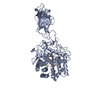

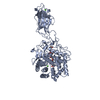







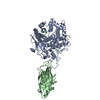
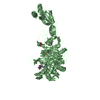
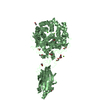
 PDBj
PDBj






